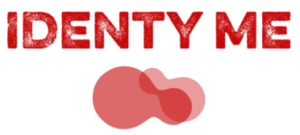A vasectomy is a surgical procedure done for a man who wants to stop passing on their genes. It is often done if the person has made up their mind never to have children or has already fathered children from other relationships that they want to be sure of not having any more. The procedure closes the vas deferens, which controls the transportation of sperm from the testicles.
A vasectomy is essentially permanent. However, about 10% of men who get a vasectomy will eventually request microsurgery to reconnect their sperm ducts due to a change of mind in the future. A person can decide to have a vasectomy at any time in life, although it is often done in the prime of fertility as people get older.
History of Vasectomy

An accomplished surgeon named Astley Paston Cooper, who is considered to be the founder of modern British surgery, was the first person to describe the vas deferens. His paper “Observations on the Structure and Diseases of the Testis” was published in 1830.
Dr Leon Goselin, on the other hand, performed a series of experiments on dogs, which led him to find different ways of doing the procedure. He came up with a technique called “surgical ligation and resection”. In 1853 Goselin published his findings.
Harry Sharp performed the first vasectomy in the United States for non-medical reasons. The subject of his first vasectomy was a young man who complained of excessive masturbation. After the surgery, the boy was reported to have stopped the destructive habit and even became more bright and cheerful.
Types of Vasectomies

1. Conventional Vasectomy
A vasectomy is based on cutting the vas deferens and then tying it off. During a conventional vasectomy, a doctor cuts the vas deferens and ties it off with the help of a stitch. The procedure is done with local anesthesia, eliminating the need for an overnight stay in the hospital. Depending on the doctor, a person may achieve a conventional vasectomy with just one or two cuts. The stitches made at the end of the cut dissolve over time; thus, the vas deferens can be reopened in the future if the man decides to do it. Cutting the vas deferens implies that sperm can no longer reach the semen.
2. No-Scalpel Vasectomy
The No-Scalpel vasectomy is a minimally invasive procedure in which special instruments make small openings in the skin instead of using a scalpel to make a large incision. An NSV incision can be as small as 10mm, and no sutures are required. A vas ring clamp and a vas dissector are the instruments that are used. A no-scalpel vasectomy is a relatively simple vasectomy, and most men who undergo it can immediately resume their normal activities post-procedure.
3. Minimally Invasive Vasectomy
The Minimally Invasive vasectomy procedure is the least invasive of all the vasectomy procedures. In this procedure, one incision is made in the scrotal skin, and that is all. The incision is made just above the pubic hairline.
Is a Vasectomy 100% Effective?

A vasectomy is nearly permanent in preventing the transmission of children from the person doing the vasectomy. The failure rate of getting a vasectomy is extremely low, approximately 0.5% or less. The failure rate depends on several factors and is not always the same for all men. Some factors that can affect the efficacy of getting a vasectomy are:
- Being too young. A vasectomy is best done on men 30 years old and above. Younger men have not matured completely and have a higher chance of undergoing a vasectomy reversal.
- Being too old. Older men who have had vasectomies for a long period have a higher chance of factors such as atherosclerosis, which leads to blood clot formation.
Despite the huge success rate of getting a vasectomy, one in ten thousand vasectomies will fail. Although the failure rate is very low, there is a need to keep in mind that if a man undergoes a vasectomy and has the vasectomy reversed, he may still have fertility problems.
A doctor can routinely check the semen samples of a patient who has just undergone a vasectomy to confirm whether the patient is still producing sperm after the vasectomy. If the test shows that the patient has no sperm in his semen, then it means that the procedure is effective.
Side Effects of Getting a Vasectomy

Mild pain is experienced by almost all men who undergo a vasectomy. The pain is usually felt at the site of the incision made on the scrotum. In some cases, the pain is severe and quite intolerable. Generally, the pain is mild and can be controlled using common pain relievers. Swelling is usually a soft side effect. The swelling is commonly seen between two days and two weeks after the vasectomy is done. The swelling will subside eventually with time. A swelling that lasts long can be a sign of infection and should be reported to the doctor.
Blood Thinners
Before getting a vasectomy, patients should avoid certain medications for blood clotting. Blood thinners such as warfarin (Coumadin) cannot be used with any form of vasectomy. These blood thinners are often prescribed to patients with a history of blood clots in the legs or lungs. Patients who are on warfarin should keep blood clotting under control before getting a vasectomy. Patients should also avoid aspirin.
Allergic Reactions
Vasectomy is associated with allergic reactions in some patients. These reactions are mild and subside with time as the body gets used to the procedure. Mild allergic reactions may include skin rashes, itching that is not controlled by topical anti-itching cream, or swelling of the face. Other allergic reactions include hives or anaphylactic shock. Patients who have any of these symptoms should seek immediate medical attention.
Conclusion
A vasectomy has several benefits for the patient compared to other forms of birth control. Being a permanent form of contraception, a man who undergoes vasectomy should consider it as one of his options if he is thinking of preventing children in the future.









